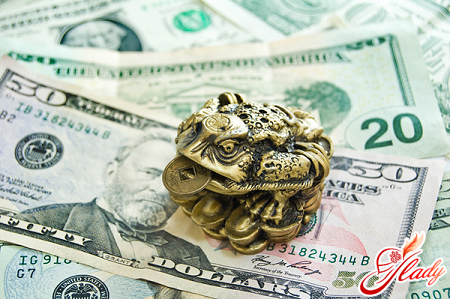 "Personal financial plan" - such"impressive", serious words. You immediately imagine successful, but slightly tired bankers with a "clingy" look, business negotiations, heavy leather chairs. And then - a vacation in the Maldives, a personal yacht ... and already, it seems, you hear a casually thrown phrase: "Oh, I'm so tired of this sun!" You think that all this is very far from you and completely unattainable? But is it so? Most likely - you are wrong. You just need to really want it. And a kind of "magic wand" will come to your aid - a plan. What is it and how to make a personal financial plan? There are no secrets. Strictly speaking, this is a plan of actions that you must take to achieve certain goals.
"Personal financial plan" - such"impressive", serious words. You immediately imagine successful, but slightly tired bankers with a "clingy" look, business negotiations, heavy leather chairs. And then - a vacation in the Maldives, a personal yacht ... and already, it seems, you hear a casually thrown phrase: "Oh, I'm so tired of this sun!" You think that all this is very far from you and completely unattainable? But is it so? Most likely - you are wrong. You just need to really want it. And a kind of "magic wand" will come to your aid - a plan. What is it and how to make a personal financial plan? There are no secrets. Strictly speaking, this is a plan of actions that you must take to achieve certain goals.
How it works?
Many people live paycheck to paycheck.Quite often, this attitude to money is based on a feeling of uncertainty about the future. And the truth is - you never know what tomorrow will bring. And if today there is an opportunity to buy some nice little thing, go to a restaurant or go to an expensive resort, is it worth denying yourself this? After all, you still won’t be able to save up for an apartment/villa/yacht, so why limit yourself in small things? However, sooner or later there comes a moment when a person begins to think about what will happen to them in five, ten, fifteen years. Have you already asked yourself this question? And how did you like the answer? If not, then it’s time to think about a personal financial plan. For what period should a financial plan be drawn up? It can be drawn up for any period - six months, a year, 5 years - it all depends on what you are striving for. You need to focus on the most distant goal. For example, if your task is by the age of 50 you start “living on interest”, and you are now 35, then you need to make a plan for 15 years.
What does this give?
First of all, confidence in the future.You are not just letting your future take its own course, but actively participating in its creation. Quite quickly, you will begin to understand that the goals that previously seemed unattainable are quite real. You will be able to organize your life and begin to feel a sense of pride. You will be imbued with self-respect and stop being afraid of the future. Sounds tempting? But how to make your personal financial plan? Start with the simple.
Set goals
Of course, in order to start strictlyTo plan - and therefore, to limit - your life in some way, you need an incentive. What can be such an incentive? Of course, having a goal. Each person is individual. Everyone has different dreams and aspirations. And everyone's income level is also different. Therefore, the goals will be different. Imagine what you would like to achieve, say, in 15 years. Maybe buy a large apartment? Or send your child to study in England? Or go on a round-the-world trip? Don't be afraid to dream. However, your desires should still be a little "tied" to reality. Set specific deadlines for achieving your goals. For example, in a year you want to buy a car, in five - an apartment, and in 15 - start living exclusively on the interest from the capital, i.e. start receiving passive income.
Prioritize
Look through that list of goals carefully and"dreams" that you made. You did it on paper, right? Determine which of these are the most important and which are secondary. It is quite simple to do. Let's say you have two main tasks. The first is to buy an apartment. The second is to have a passive income of $ 3,000 by the age of 40. Which of these is more important? Let's say you already have some housing - even if it is not at all what you would like. And at the same time, you are simply panicky afraid of a poor old age. Then the main goal becomes obtaining passive income. But if you have three children and still do not have your own "corner", you are tired of living with your parents or wandering around rented apartments, then, most likely, buying an apartment will become the main task. Dividing into main and secondary tasks will help you understand what, in case of "failures" of your plan, can be sacrificed, or which points should be adjusted.
Calculate income and expenses
If you have never led beforehome accounting, you will have to start right now. Before making a financial plan, you need to find out where your money is “flowing out”. Very often, people’s ideas about expenses are far from reality. Have you ever tried to calculate how much money you spend per month, for example, on chewing gum? Or cakes at the nearest cafe? Try it. The result may surprise you. Therefore, for the next 2-3 months - and that’s how much you will need to get the full picture - “a girl’s best friend” is not even diamonds, but a pen, a thick notebook and a calculator. Be sure to collect all the receipts and write down even the most “penny” expenses. Divide all the information into groups and enter it into a table. For example, “utility bills - amount”, “food - amount”, “entertainment - amount”, etc. If you need to keep such accounting for yourself - if this is a routine matter, then you can immediately move on to the next step in preparing your personal financial plan.
Assets and liabilities - what are they?
Don't be afraid of the specific terminology.It's very simple. Assets are everything that brings you income. Assets are bank deposits, securities, mutual fund shares. Liabilities are what lead to expenses. For example, a bank loan, debts, etc. It's interesting that the same thing can be both a liability and an asset in different situations. How? It's very simple! For example, a car is a liability. You have to buy gasoline, spend money on maintenance, buy new parts, etc. But! If you start earning extra money on your car, it will turn into an asset. The same thing with an apartment - while you live in it, you have to pay rent, make repairs, buy new furniture - that is, spend money. But if you rent it out and receive income - it becomes an asset. Think about whether you have any liabilities that can be converted into assets. For example, a plot of land that no one will ever use. Or an old house in a remote village that you inherited. Maybe you can sell some of this - even if it's cheap - and invest the money on favorable terms. Got it figured out?
Create protection
Unfortunately, life is unpredictable.Dismissal, another wave of the financial crisis, an accident - all this can ruin any financial plan. Therefore, before you start investing - investing - "extra" money, you need to "insure yourself". That is, reduce the risks. Financial risks are the worst enemies of even the most carefully thought-out plan. Of course, you still won't be able to insure yourself 100% against all misfortunes and troubles, but it is quite possible to reduce the risk to a minimum.
What are the risks and how to reduce them?
The first group is unplannedexpenses and unemployment. Unplanned expenses are not necessarily a large sum. Repair of a washing machine, a visit to the dentist, an urgent purchase of a new TV to replace a hopelessly broken old one... and who knows what else. And each such expense will punch a small hole in the structure of your financial plan. And what can we say about a sudden loss of a job? How can you insure yourself against this? Financial consultants recommend creating a "reserve fund". What is it? This is a certain amount, sufficient for you to be able to calmly "hold out" for 3-6 months without external financial income. It is better to keep the reserve fund in a bank account with the ability to replenish and partially withdraw. Typically, the interest rate on such an account is 5-8% per annum. The second group is illnesses and accidents. Even a regular bike ride can turn into a long "rest" in the hospital. Have you ever thought about what situation your children will find themselves in if something happens to you? In order to protect yourself from such situations, you can use a voluntary health insurance and life insurance program. The cost of insurance is not that high - about one percent of the insured amount per year. Also, do not forget to buy insurance for trips abroad. Then, if necessary, you can get free medical care there. The third group is property risks. A fire at the dacha, a flood in the apartment, a car theft - such situations, unfortunately, are not uncommon. A lot of effort, time and, of course, money are spent on "fighting" them. Use property insurance programs. This is especially true if you rent out an apartment or rarely visit your dacha. The fourth group is "damage to third parties." This situation is very familiar to most motorists. In addition to compulsory OSAGO insurance, you can also use voluntary DSAGO. This will "save" you if the amount of payments under compulsory insurance does not cover the amount of damage. Protection of the future. To solve this problem, you can use replenished bank accounts or insurance programs of non-state pension funds. Insurance contracts are usually concluded for at least 10 years. Therefore, it is recommended to make investments in convertible currency - dollars, euros or Swiss francs.
Counting
At this stage, in order to understand howTo create a personal financial plan, you need to “balance the debits and credits.” Calculate your monthly income and add the profit you receive from your assets to it. Subtract your expenses from the resulting amount. The resulting amount is your investment potential. By investing this money wisely, you can earn a stable income. Sounds tempting! But how and where to invest this money so as not to “burn out” and lose your last? First, you need to decide whether you will determine your investment strategy yourself or seek help from a financial advisor. Unfortunately, in both cases, there is some risk.
Types of investors
No matter which option you choosechoose, it would be a good idea to determine in advance what type of investor you are. What types of investors exist? Conventionally, they can be divided into three main groups.
- Group one - conservative investor
Such people carefully weigh every step they take.and agree to invest only if they are absolutely sure of a successful outcome. For a conservative investor, the most important thing is to preserve their investments. They never take risks and take all measures to protect their capital. Of course, the conservative investor's income is small - this type of investment usually gives 3-5% per annum. But they are stable! As a rule, a "conservative" never loses and slowly but surely achieves their goals. If you belong to this type of investor, then you are recommended to keep at least 60% of your investment potential in bank deposits or invest in savings insurance programs.
- Group two - moderate investor
For a moderate investor, it is certainly also importantsave their savings, but at the same time they do not want to be satisfied with the minimum income. Therefore, sometimes they take risks. But at the same time, they always try to maintain a balance between low-risk and risky investments. In case of a loss, they will pay off their debts with the income from “no-lose” investments. Moderate investments usually bring 10-12% per annum. Financial consultants usually recommend that moderate investors divide the “investment portfolio” into two equal parts. Half should be invested in bonds and shares, and the other half should be put on deposit or contributed to insurance programs. Mixed mutual funds are also suitable.
- The third group is the aggressive investor
The main goal of an aggressive investor is"make a fortune". Therefore, he focuses on high-risk stocks. Of course, if successful, such securities bring the highest income. People of this type can both get rich and go bankrupt in one deal. On average, with a successful "scenario", an aggressive investor receives 12-20% per annum. As a rule, aggressive investors are professionals who clearly understand what they are dealing with. If you consider yourself to be this type of investor - feel free to invest most of your savings in hedge funds, stocks and mutual funds. However, you should not forget about conservative investments either. How to determine what type of investor you are? Well, first of all, it depends on gender and age. As a rule, women are more cautious than men. And young investors are more fearless than middle-aged people. Although, of course, there are exceptions to any rule. Also, in order to better understand yourself, you can use special psychological tests.
Drawing the table
Well, you're almost there.The most important thing remains - to systematize all the information and start implementing your personal financial plan. In order to make everything clear, it is best to make a table. There are two ways. Method one. It is for those for whom the phrase "make a table" causes an attack of uncontrollable yawning. If all these calculations/calculations are too painful for you, if you feel that you are "getting bogged down" in them, make it simpler - seek help from a financial consultant. By the way, most novice investors do just that. True, there is one downside here - your expenses will be replenished with another item. Method two. It is for the persistent. For those who want to thoroughly understand how to make a personal financial plan. Sit comfortably at the computer, put a calculator next to you and tell your "family" not to bother you for 2-3 hours. Open Excel and draw a table:
- Count first. "Year". In this column are introduced, in increasing order, all the years, beginning with the current and ending with the year "the realization of dreams."
- The second graph. "Capital at the beginning of the year." Compare income and expenses for the previous year. Add to this amount all the savings that you have at the moment. You already put them on a bank deposit, right? So, get 5-8% per annum.
- Column three. "Investment amount."This is the money you invest at the end of the year. In order to determine it, you must first find out how much money you will have in a replenishable bank deposit. Having calculated this amount, you must subtract your "reserve fund" from it. Remember yet? This is money that should be enough for 3-6 months of a comfortable existence.
- Count four. "Financial goals". Enter all your dreams with the line of the year in which you expect to implement them.
- Count five. "Investment operations". In this column there will be three columns at once: "conservative", "moderate" and "aggressive". You have already decided what type of investor are you?
- So, “spread” the amount from the third column - “investment amount” - across the columns, in accordance with your ideas.
- Column six. "Funds remaining after investment." This is your insurance reserve. Therefore, the number in this column should never change.
- Count Seven. "The state of investment." It also needs to be divided into 3 columns: "conservative", "moderate" and "aggressive". The number in it will show how much your investments have grown.
- Count eighth. "Balance at the end of the year." In order to fill in this column, it is necessary to add the numbers written in the sixth and seventh columns. From this amount, take away the money spent on the realization of financial goals.
- All! The table is full.
Then the number obtained in the eighth column must be copied into the second column of the next year.
Summing up
Take a close look at the “work of your own hands”.If all the numbers in the table are positive, everything is fine. This means that you have assessed your capabilities correctly and your goals are quite achievable. Now the main thing is not to retreat and strictly follow the plan. Something does not add up? Do not be upset! After all, a financial plan is not something immutable - you can, and sometimes even need to, make adjustments to it. How can this be done? There are several options. For example, you can increase the time frame for achieving a particular goal. Or plan to buy not a five-room apartment, but a three-room apartment. You can once again carefully weigh all your "dreams". Perhaps one of them is not so fundamental for happiness? After all, in essence, the most important goal is to gain confidence and become a successful and wealthy person. And on the way to this goal, you have already taken a very big step. Which means that everything will definitely work out for you!









